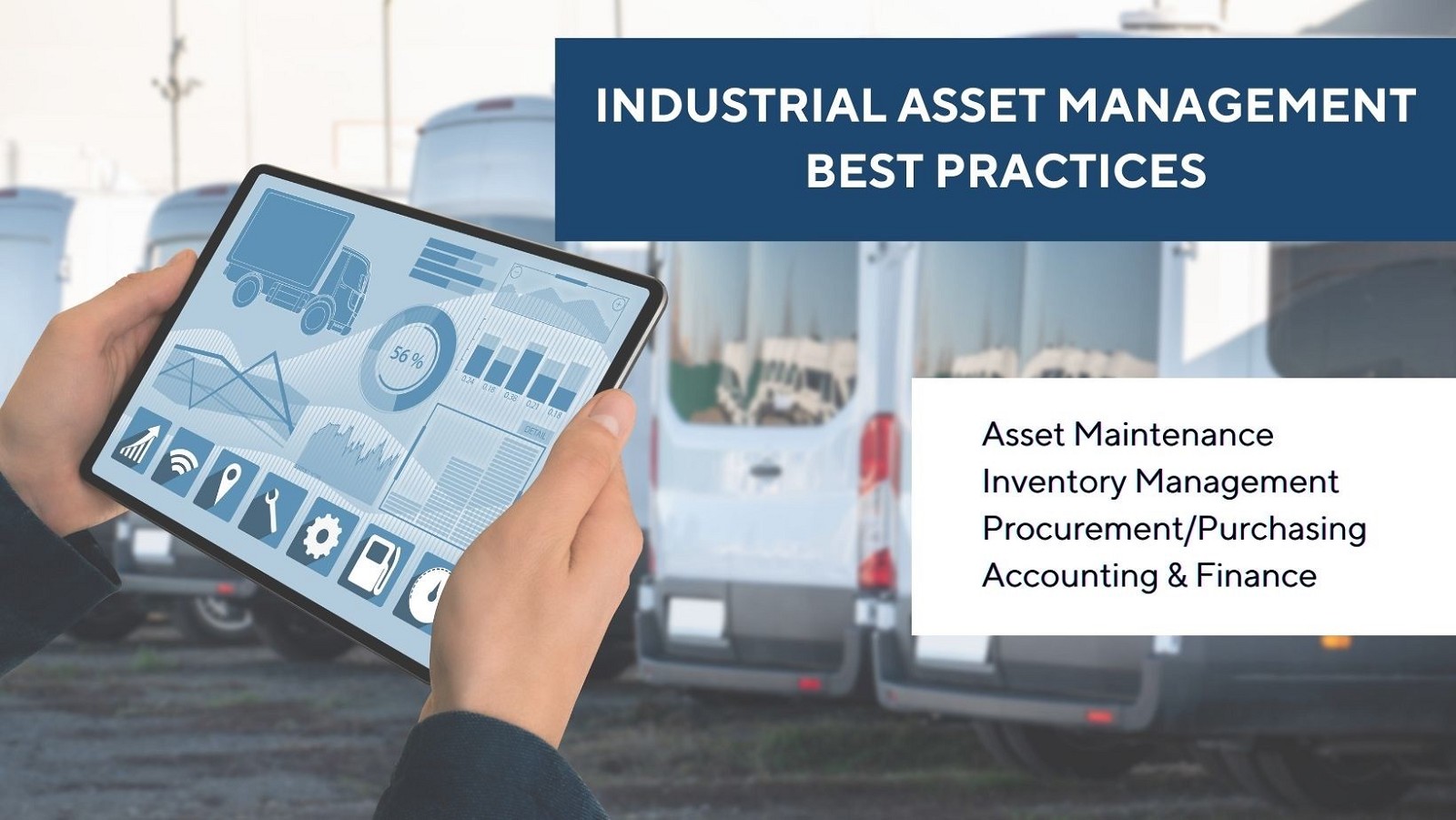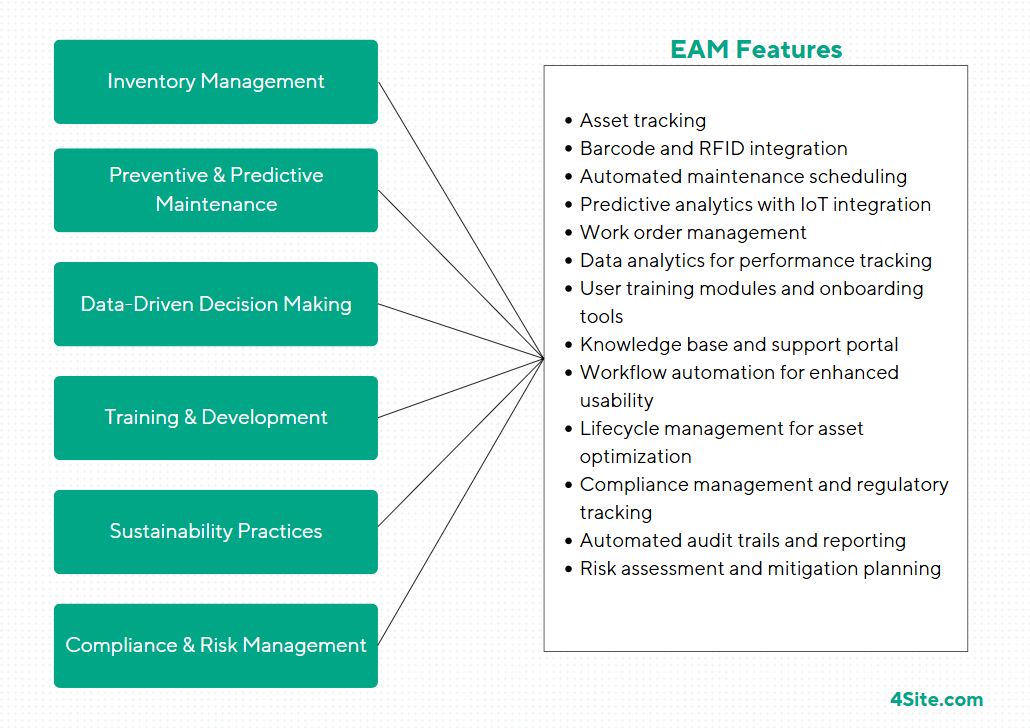Industrial Asset Management Best Practices

What Is Industrial Asset Management
Industrial asset management is about taking care of an organization's physical assets, like machinery, equipment, and infrastructure, throughout their lifecycle. This process is crucial for industries like oil and gas, manufacturing, utilities, transportation, and mining, where reliable and efficient equipment is the backbone of daily operations.
Think of it as a proactive approach to keeping assets in their best shape while ensuring they deliver maximum value. It's not just about fixing things when they break; it's about preventing problems before they happen.
Key Components In Asset Maintenance:
- Preventive and Predictive Maintenance Programs
- Reliability-Centered Maintenance (RCM)
- Asset and Equipment Tracking
- System Integration
- Asset Lifecycle Management
- Asset Performance Indicators
- Work Order Management
- Scheduling and Planning Maintenance
Common Challenges in Asset Management Industries
- Limited Visibility: Many organizations rely on outdated systems or fragmented data sources that don't communicate effectively with each other. This lack of integration makes it difficult to track asset performance or access real-time information. For instance, if data about equipment usage or maintenance history is scattered across spreadsheets or separate tools, identifying issues or making data-driven decisions becomes nearly impossible.
- Unexpected Repairs and Downtime: Unplanned downtime can be a nightmare for industries where continuous operations are critical. When equipment breaks down unexpectedly, it not only halts production but also incurs high repair costs and lost revenue. For example, in manufacturing, even a single hour of downtime can cost thousands of dollars. Without predictive tools to anticipate these failures, companies are often left scrambling to fix issues reactively.
- Aging Assets: Older equipment is more prone to breakdowns, inefficiencies, and higher maintenance costs. However, replacing such assets is often delayed due to budget constraints or long procurement processes. Managing these aging assets while optimizing their lifecycle performance becomes a balancing act between cost and reliability. This challenge is particularly prevalent in industries like utilities and transportation, where infrastructure is decades old.
- Forecasting Failures: Predicting when an asset might fail or require replacement is crucial for effective planning, but it's easier said than done. Without advanced tools like predictive analytics or IoT sensors, organizations rely on guesswork or outdated maintenance schedules. This can result in either over-maintenance, wasting resources, or under-maintenance, leading to costly failures.
- Shortage Of Workforce: The shortage of skilled workers is a growing problem in many industries. Experienced technicians are retiring, and finding qualified replacements is becoming more difficult. Additionally, training new employees to handle advanced asset management technologies takes time and resources. When combined with external factors like supply chain disruptions or unpredictable weather, this shortage creates even more strain on maintenance operations.
- Supply Chain and Weather Challenges: Unpredictable supply chains can delay the availability of critical spare parts, while extreme weather can disrupt both operations and maintenance schedules. For example, in the mining industry, heavy rains or storms might damage equipment or make it inaccessible, further delaying repairs. These challenges can lead to prolonged downtime and increased costs, highlighting the need for effective contingency planning.
Benefits of Adopting Asset Management
Improve Asset Performance: Industries managing assets like buildings, machines, and equipment ensure they operate at optimal capacity throughout their lifecycle. By scheduling maintenance activities based on real-time tracking, industries can minimize disruptions. Tools like IoT-enabled predictive systems detect issues before they occur, allowing maintenance teams to act proactively. Integrating with inventory management can accurately stock of spare parts ensures swift repairs, reducing downtime and improving overall productivity.
Cost Control: Adopting asset management reduces the need for emergency repairs, unplanned replacements, and excessive energy consumption, significantly cutting operational costs. Proper financial planning, such as allocating budgets for periodic maintenance, helps organizations avoid the financial burden of last-minute repairs. Regular asset maintenance extends the lifespan of critical equipment, delaying expensive capital investments. In the utilities sector, for example, preventive maintenance of turbines and transformers minimizes the risk of outages and associated costs, contributing to a more stable and cost-effective operation.
Increased Operational Efficiency: Streamlining workflows through effective asset management improves planning, resource allocation, and inter-departmental coordination. By utilizing Enterprise Asset Management (EAM) software, organizations can integrate asset data across departments, eliminating silos and enabling real-time decision-making. Data-driven insights, such as metrics on Mean Time to Repair (MTTR), further optimize repair processes to maximize uptime. In the transportation industry, for example, tracking vehicle performance and scheduling timely maintenance ensures uninterrupted logistics operations and enhances overall efficiency.
Prolonged Asset Lifecycle: Asset management components extends the useful life of assets, preventing premature failures and ensuring that equipment remains productive beyond its intended lifespan. Predictive analytics plays a crucial role in identifying signs of wear and tear early, allowing for timely interventions that save costs in the long run. Sustainability practices, such as reducing waste and promoting eco-friendly operations, complement these efforts by aligning with environmental goals. In the oil and gas sector, prolonging the lifespan of drilling equipment not only reduces environmental impact but also defers significant capital investments, delivering both economic and ecological benefits.
Enhanced Safety and Compliance: Asset management helps organizations meet safety and regulatory standards, reducing risks associated with accidents and penalties for non-compliance. Regular audits, coupled with updated safety protocols, ensure that assets are aligned with legal and operational requirements. Additionally, providing employees with training on asset management tools and risk mitigation strategies enhances workplace safety. For instance, in the mining industry, monitoring conveyor belts and ventilation systems safeguards workers' health while maintaining compliance with environmental and operational regulations.
Sustainability and Environmental Impact: Implementing strategies such as efficient asset utilization and integrating IoT sensors, organizations can monitor and optimize energy usage across facilities. This not only lowers operational costs but also aligns with global sustainability goals. In manufacturing industries, for example, the adoption of energy-efficient machinery reduces greenhouse gas emissions and enhances cost savings, creating a win-win scenario for businesses and the planet.
A study by the International Facility Management Association (IFMA) found that organizations that implemented preventive maintenance practices saw a 15% reduction in maintenance costs annually.
Best Practices in Industrial Asset Management
1. Asset Inventory and Classification
Establishing a centralized system to track all assets is fundamental to effective asset management. Tools like CMMS (Computerized Maintenance Management Systems) or EAM (Enterprise Asset Management) software provide real-time visibility for asset managers and IT administrators, enabling more informed decisions. Categorizing assets based on their criticality helps prioritize maintenance for high-value equipment, ensuring that key operations are not disrupted.
Actionable Tip: Start with a simple spreadsheet to log essential details such as asset location, usage, and maintenance history. As your operations expand, transition to a robust EAM system to accommodate scaling needs and improve efficiency.
2. Preventive and Predictive Maintenance
Regular maintenance, scheduled using data-driven insights, can significantly reduce unplanned downtime, improving overall productivity. Predictive maintenance goes a step further by using advanced technologies such as IoT (Internet of Things) sensors and AI-based diagnostics to identify and address potential failures before they occur. This proactive approach minimizes costly repairs and extends the lifespan of critical assets.
3. Data-Driven Decision Making
Analyzing metrics like MTBF (Mean Time Between Failures) and MTTR (Mean Time to Repair) helps identify inefficiencies in the system. Collecting and interpreting such data enables operations managers and plant supervisors to make well-informed decisions to improve performance. Dashboards and reporting tools can further support data visualization and strategic planning.
4. Training and Development
Investing in employee training is crucial to maximize the potential of asset management tools and systems. Regular workshops and certifications can keep teams updated on best practices and new technologies, ensuring they are prepared to handle evolving challenges. This continuous learning culture enhances efficiency and fosters a proactive workforce.
5. Sustainability Practices
Sustainability is becoming a critical component of modern asset management. Strategies to reduce energy consumption, emissions, and waste align with environmental goals and improve operational efficiency. For instance, using energy-efficient equipment and optimizing asset utilization can promote sustainability in industries like utilities and transportation.
An Example: Aramine has introduced Aramine Solar, an innovative solution for integrating renewable energy into mining sites. Aramine Solar involves the deployment of solar panels designed to recharge battery-powered machines and supply clean energy to mining operations. This system reduces dependence on fossil fuels, decreases operating costs, and contributes to the sustainability goals of mining companies. By incorporating solar energy, mines can achieve a more resilient and environmentally friendly energy infrastructure. Read the article.
6. Compliance and Risk Management
Compliance with industry regulations ensures safety standards are met and avoids penalties that could arise from non-compliance. Regular risk assessments help identify vulnerabilities, and developing mitigation plans can safeguard against potential disruptions or safety hazards. Proactively managing risks strengthens operational resilience and enhances trust among stakeholders.

Tools and Technologies for Industrial Asset Management
Selecting the right tools and technologies for industrial asset management depends on the size of the enterprise, budget, and specific operational needs. Different categories of software cater to varying levels of complexity, integration, and customer support.
Enterprise-Grade Solutions for Large Industries
Large-scale enterprises with complex operations often rely on high-end Enterprise Asset Management (EAM) and Enterprise Resource Planning (ERP) solutions. These platforms offer extensive features, deep integration with financial and procurement systems, and advanced predictive analytics. However, they tend to be expensive and require dedicated IT teams for implementation and maintenance. Additionally, ERP solutions like SAP and Oracle provide support through third-party vendors rather than direct assistance, which can slow down troubleshooting and updates.
Affordable and Scalable Solutions for Small and Medium Enterprises (SMEs)
For SMEs that are starting production or expanding operations, cost-effective and scalable asset management solutions are essential. These tools provide core asset tracking, maintenance scheduling, and inventory management without the high costs associated with enterprise-grade software. Unlike larger ERP systems, SME-focused EAM solutions often include direct customer support, ensuring quicker resolution of issues and smoother implementation.
Customer Support Differences
- Global ERP Systems (SAP, Oracle etc.): Support is typically offered through third-party vendors, requiring additional contracts for assistance. Customization and troubleshooting may take longer due to indirect support channels.
- Mid-Tier and SME-Focused EAM Solutions (e.g., 4Site ERP): Offer personalized and hands-on customer support. If the company is local, direct on-site assistance can be provided to ensure smooth system integration and minimal downtime.
Businesses can optimize efficiency, reduce operational risks, and improve overall asset performance by choosing the right asset management tools based on enterprise needs and available support structures.
Are you ready to implement the right asset management strategy that fits your business?
Book a consultation call or schedule a demonstration with 4Site by contacting us at sales@4site.com or 1-800-596-3437
